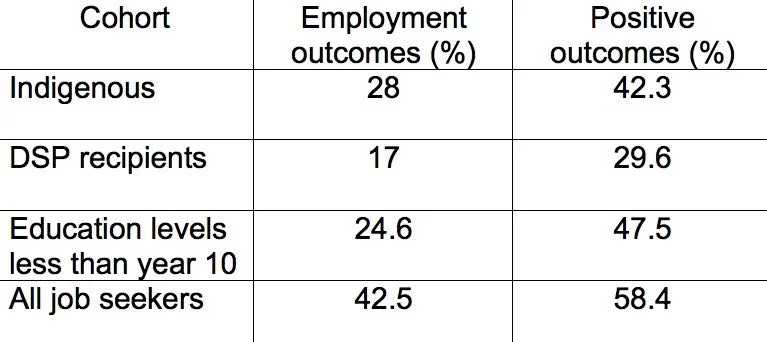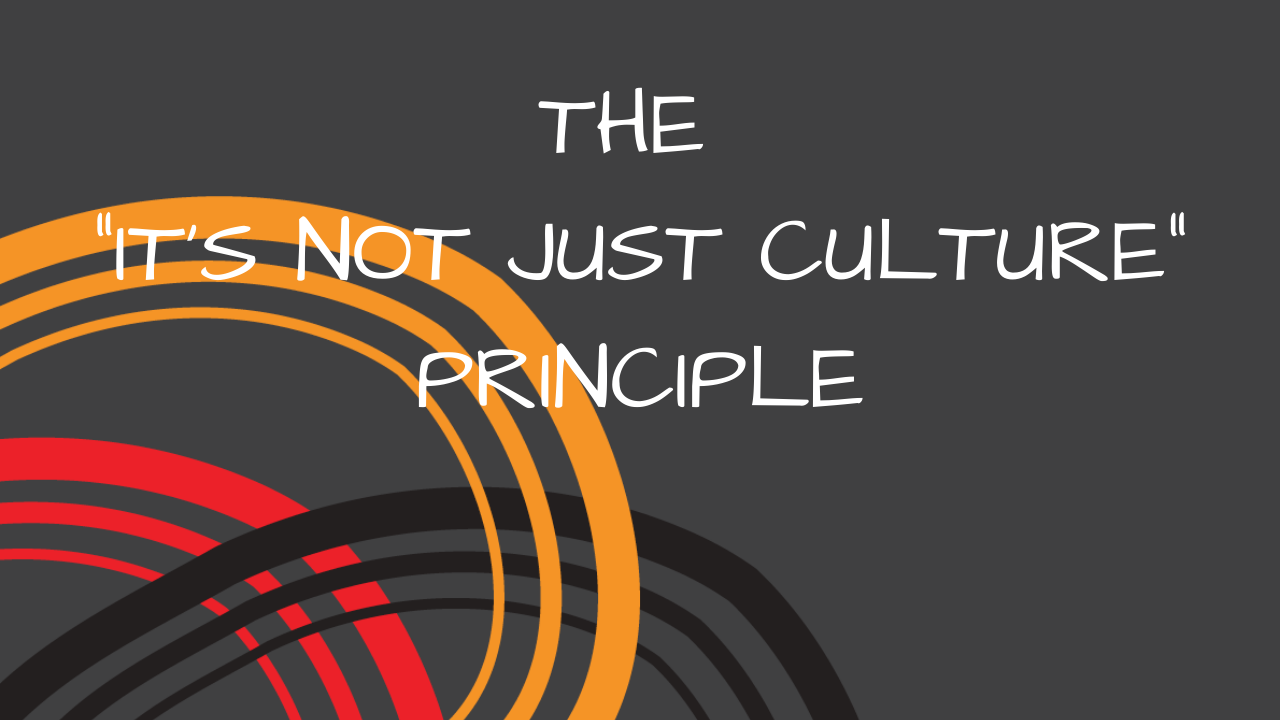The successful tenderers for the new employment services contract will be announced this month, and Indigenous employment will be more important than it has been for providers across the nation because of a new performance measure. Providers will realise, sooner or later, that getting Indigenous employment right has never been more important for their business.
I want to share with you the four things that you can do in your organisation to give you the best chance to get Indigenous employment right. But first, I want to show you why it’s going to be so important for you, and how well employment services are doing right now.
Part of the performance framework in the coming employment services contract is a new measure for Indigenous employment targets. This measure will be the proportion of outcomes for Indigenous job seekers compared to the caseload. For example, if your caseload is 15% Indigenous job seekers, then 15% of your outcomes will be expected to be for your Indigenous job seekers. For more information, check out the Request For Tender for Employment Services 2015-2020 Clause 2.18.3.
I have worked with JSA providers who believe they are doing well in the Indigenous employment space, but the figures tell a different story. According to the most recent Labour Market Assistance Outcomes Report (June 2014) for Job Services Australia, Indigenous people have much lower employment outcomes (28%) than job seekers across the board (42.5%). In fact the only job seeker cohort with lower rates of outcomes are Disability Support Pension (DSP) recipients (17%) and those with education levels less than year 10 (24.6%).
The same report showed that the trend for Indigenous job seekers continues for positive outcomes (combined employment and education/training outcomes), with Indigenous people (42.3%) having much lower outcomes than jobseekers generally (58.4%). DSP recipients still had the lowest levels (29.6%), while those with less than year 10 had greater education and training outcomes, leading to positive outcomes of 47.5%.
Until the outcomes for Indigenous cohorts are equal to or approaching the level for non-Indigenous job seekers, we simply cannot say we are doing well with Indigenous employment. These figures show there is still a long way to go for Indigenous employment outcomes.
So, I think we can agree that there is plenty of room for improvement with Indigenous employment, and you can see how critical it will be in the next contract. So, what do you need to do now to get it right?
With over 18 years experience in Indigenous employment, I’ve identified four areas you must work on and improve. Four things you need to get right to give your organisation the best chance to make Indigenous employment work. And, I’m going to share them with you.
1. Understand Aboriginal experience
Your employment consultants as well as your other staff must have an understanding of Aboriginal experience and be able to work effectively with Aboriginal people. We know that many Indigenous people face intergenerational unemployment, poor education levels, poor health, higher suicide rates, and as outlined above, poor employment outcomes. We see this every day with Indigenous job seekers in our offices, or when they don’t engage in your services and leave you wondering why.
But we need to understand how this has happened, and just as importantly how we can move forward and make things better. This is a fundamental, a ticket to the game. Fail to get this right, and all your efforts will be in vain.
You can start by ensuring all your staff have an understanding of Aboriginal culture, disadvantage and barriers to employment, and can use appropriate language when speaking about and with Aboriginal people. How confident are you that your staff understand and can work effectively with Aboriginal people?
2. Make the workplace attractive
Your workplace needs to be attractive to Aboriginal staff. We can be the most effective advocates for your organisation in local communities. Your Aboriginal staff need to be supported, and developed, to deliver services to job seekers in our communities. We need to be able to work for you, and remain Aboriginal people.
There needs to be recognition that Indigenous staff of employment services, or any role in the community, are never ‘off-the-clock’. We assist people in our communities every day, and we will either represent you, or someone else. How do you show your Aboriginal staff they are valued and safe within your workplace? What do you do to make sure they are empowered to deliver services to our communities?
3. Communicate with employers
Communicating with employers in an effective and appropriate manner about Aboriginal employment, and then supporting their efforts to make Indigenous employment work is critical for success.
The messages your organisation and staff give to employers about Indigenous employment can help or hinder outcomes.
Are you selling an effective recruitment measure that is feasible for small to medium businesses? Are you selling wage subsidies for short-term outcomes? When employers make discriminatory comments how do your staff handle these? Does the language your staff use support the outcomes you want, or are your goals being undermined because staff are ill equipped to deal with issues without confrontation or sacrificing success?
4. Invest in Aboriginal job seekers
Investing in the development of Aboriginal job seekers with hard skills (qualifications, industry licences) and soft skills (time management, workplace communication) so they can operate in the workplace effectively is critical. The next employment services contract is about preparing job seekers to meet employer needs. But preparing your job seekers for job transition is just as important for long-term success. Give your job seekers the ability and confidence to move from one job to the next without returning to welfare. Aboriginal people and communities will reward you if you do.
What you do about these four elements will differ based on your service model and business strategy. But regardless of what your strategy and service model are, you will need to consider these areas to improve your Indigenous employment outcomes.
Consider this. Even if only one provider nails Indigenous employment, in one region, the Indigenous employment landscape will change dramatically. What are your chances of being that provider?
How is your organisation going in these four crucial areas? What are you doing well? What can you do better?
If you’d like to receive updates from Blakworks, including notifications when a new blog article goes live, click the button below.






